Social media advertising, ah. After hearing all the hype, you’re thoroughly tired of hearing about how vital something is.
You know the necessity of promoting your company on social media to increase your clientele.
However, you are also aware that there are several platforms available. And you need to be more knowledgeable as to which to attempt first.
After all, you don’t want to choose poorly.
At this point, you require a targeted strategy for social media. Concentrating your efforts on one or two social media platforms is far better than determining which one is most effective for your company.
But how can you tell which is better for your company—Facebook or Twitter?
The solution is more complex. To assist you in determining which social networking platform is ideal for your business, we’ll take a close look at both in this piece.
Have you prepared? So let’s get going!
What Makes Facebook and Twitter So Great, Anyway?
Let’s begin by responding to the following queries: What initially makes Facebook and Twitter great?
And why should you use one of these platforms to start your social media marketing campaigns?
Taking into account the statistics is one of the finest approaches to address these questions:
- The most popular social networking site in the world is Facebook. As I have indicated, it has an astounding 2.3 billion monthly users.
- This indicates that 22% of people worldwide use Facebook.
- In the United States, around 70% of adults use Facebook.
- Nearly 70% of B2C marketers have found new clients using Facebook.
- Twitter usage among adults in the US is 24%.
- Facebook could initially seem to be the more advantageous platform for business owners and marketers. After all, Facebook has many more users than Twitter.
Don’t dismiss Twitter too quickly, though. Avoid basing your choice just on the total number of users.
There are other things to think about, such as the platform that your target audience uses.
In light of this, let’s examine who frequents Facebook and Twitter in more detail.
Facebook users versus Twitter users
It’s crucial to conduct extensive research to determine where your target consumer spends their time before selecting your platform.
When choosing a platform, this factor must be taken into account. After creating your customer avatar, you ought to clearly define the demographics you want to reach. Picking the platform where these people are most active makes sense.
And who makes use of these platforms? Let’s look at it.
Facebook’s basic demographic data
As I said above, nearly 70% of American adults use Facebook. However, in recent years, Facebook has drawn older users more frequently.
65% of people in the United States between the ages of 50 and 64 and 90% of people over 65 use Facebook.
Facebook is extremely popular among those over 50, but younger generations are becoming less and less interested in it. If your target audience is Generation Z, taking this into account while selecting your social media platform is crucial.
If your firm is a B2C with a target market between the ages of 25 and 55+, Facebook often works best for you. Fashion, auto, e-commerce, retail, entertainment, real estate, marketing, sports, or health and wellness are additional areas where it works effectively.
Twitter’s basic demographics
You shouldn’t disregard Twitter just because it has fewer users than Facebook.
Although only 25% of American adults use Twitter, this social media site draws considerably younger users than Facebook. According to statistics, between 18 and 20 is the average age of Twitter users or close to 40%.
Twitter is a social networking site that, like Facebook, typically performs best for B2C enterprises. If you work in one of the following sectors: news and information, retail, e-commerce, health and wellness, travel and hospitality, telecommunications, finance, fashion, retail, or sports, this is especially true for you.
Twitter, as opposed to Facebook, is frequently more appropriate for companies whose target customers are between 18 and 29.
Twitter vs. Facebook: User Engagement
How interested Facebook and Twitter users are in your sector is something else to consider.
You must ascertain how frequently and what kind of material your target audience engages with on each of these sites. It’s also crucial to consider how much time consumers spend on each site each day.
Let’s examine engagement more closely in light of this by considering how it functions across both channels.
A Look at User Engagement on Twitter
In general, Twitter users are a rather active group. The platform is visited daily by over half of them (46 percent), and participation is even higher among millennials. Millennials log into their Twitter accounts an astounding 81 percent of the time.
Since many journalists, politicians, and other well-known figures use Twitter, many users utilize it to find out what news stories are trending. According to surveys, over 74% of Twitter users use this social media platform to acquire news.
Nevertheless, it’s crucial to remember how quickly trending stories and other items shared on Twitter change.
Because of this, it’s critical to examine your content’s suitability for a quick-paced social network like Twitter before deciding to use it.
For instance, sign up for Twitter if you want to provide short business advice, infographics, or trending news to your audience.
However, Twitter’s negative is that it’s simple for your Tweets to get lost because fresh stuff is created there continuously. This implies there’s a possibility that only a small number of people will see your material.
A Look at User Engagement on Facebook
If you want to engage your fans over the long run, Facebook is a superior alternative for most businesses.
Compared to Twitter, the material stays relatively the same. This indicates that if your brand is new, you will have a better chance of being noticed.
Additionally, the typical Facebook user visits the site more frequently than the typical Twitter user. On average, people visit Facebook eight times per day while visiting Twitter five times daily.
Additionally, Facebook will often deliver higher user interaction than Twitter as your business develops. For each piece of material you upload, you would get roughly 700 likes, comments, and shares if you had one million Facebook followers. However, if you have a million followers on Twitter, you are likely to have only 300 interactions for each piece of information you tweet.
However, remember that audience engagement levels are more crucial than audience numbers. Having a thousand extremely engaged and devoted followers is frequently more useful than having ten thousand disinterested ones.
Twitter marketing vs. Facebook marketing
Twitter and Facebook each play extremely distinct roles in marketing.
As I have stated, Twitter moves quite quickly and primarily helps users find new content and trending news in their area of interest.
Facebook, on the other hand, focuses on connecting with family, friends, and individuals who have similar interests, as well as engaging with brands in a deeper and more intimate way.
Let’s look more closely at how Facebook and Twitter may help you market your company.
Facebook Marketing 101: Organic Reach and Content
Facebook emphasizes audience connection and offers you chances to interact with your followers through each piece of content you publish.
There are various ways to promote your posts after you’ve published them to reach a wider audience, so you don’t need to write as regularly as you do on Twitter.
Additionally, your followers have the choice to remark or ask questions about your posts, giving you a priceless chance to converse with and engage with them. If you play your cards well, this could contribute to people developing a favorable opinion of your company.
Additionally, Facebook enables you to set up a page for your company where you can post updates, videos, and a variety of other forms of content.
In recent years, Facebook has seen tremendous growth in the popularity of video content in particular. In actuality, Facebook video postings have by far the highest interaction rates.
Facebook users view about 100 million hours of video material every single day, according to research, and video postings receive 59 percent higher engagement than other post categories.
You should definitely invest your time in producing video content for your audience if your target market enjoys watching videos, as Facebook offers you many options to do so.
Curated material, in addition to videos, does incredibly well on Facebook. We refer to materials like articles, videos, and other resources that were produced by other people but are pertinent and interesting to your audience as curated content. Sharing useful resources with your Facebook fans is, therefore, definitely worthwhile.
Despite all the benefits of Facebook marketing, you should also be aware of one significant drawback: it is considerably harder for your business pages to gain organic visibility on Facebook.
You must work considerably harder to engage your audience and spend more time and money on creating a marketing campaign because it is far tougher to obtain likes on your Facebook page than it is to get followers on Twitter.
Twitter Marketing 101: Organic Reach and Content Marketing
Twitter marketing demand a very different strategy. Twitter is a very hurried social media tool that works best with short bursts of content.
Many contemporary clients, who like skimming web content rather than reading lengthy postings, may find this to be highly appealing.
Twitter is a great place to update your audience on the news about your business, products, or services because it hosts a lot of trending news.
Additionally, infographics excel on Twitter, where they are three times as likely to receive likes and shares than any other kind of information. Additionally, they have a staggering 30 times higher readability than text-based posts.
Similar to Facebook, Twitter has a huge following for curated content and videos. Make sure to use visuals rather than text when distributing curated content, and remember to include link previews, GIFs, photographs, and videos.
Twitter allows users to produce live videos and stream them to viewers in addition to posts and infographics. This gives businesses that use Twitter a greater opportunity to engage with their followers and consumers.
Remember to underestimate the power of live broadcasting to reach and engage more potential customers if you determine that Twitter is the channel best suited to your brand.
A staggering 82 percent of people view videos on Twitter, making the video, in general, a significant thing there. Furthermore, compared to other web users, those who watch a branded video on Twitter are 28% more likely to make a purchase from that brand.
Twitter has a lot of advantages, but it also has some drawbacks. New Tweets on Twitter soon get buried by a ton of existing content, which is a drawback.
This implies that if you want to improve your chances of getting seen, you must publish considerably more frequently. And even when a post does gain traction, it frequently fades away quickly.
To reach as many people as possible, it is frequently a good idea to upload the same content more than once.
Which Are Better: Facebook Ads vs. Twitter Ads?
Many companies spend a significant portion of their marketing money on Twitter and Facebook ads. Additionally, running ads on one of these networks may benefit your company.
What you should know about advertising on each of these platforms is provided below.
Ads on Facebook
The ability to reach a larger audience is one of the main benefits of Facebook advertising.
Additionally, Facebook ads offer a variety of targeting choices. This enables you to target potential customers based on characteristics like their age, income, interests, and purchasing patterns.
With these targeting choices, you may display your adverts to customers who are most likely to find them relevant and interested in making a purchase. Your chances of getting clicks and conversions are increased as a result.
Additionally, Facebook ads may be quite cost-effective, and the Facebook advertising interface is rather easy to master.
Depending on the advertising campaign, you can set a budget of up to a certain amount per day, usually between $2 and $3 per day. This implies that most businesses, regardless of age or advertising budget, can choose to use Facebook ads.
Twitter ads are often far more expensive to run than Facebook ads. On Facebook, the cost per impression is approximately $0.59, but on Twitter, it will cost you about $3.50.
The cost of Facebook ads is rising, which is a drawback. Even though ad impressions only climbed by 10% in 2017, the average price per advertisement increased by 35%.
In order to maximize their advertising budget, businesses must think about how they can target the appropriate individuals at the right time.
Facebook ads are also incredibly popular, which results in an overabundance of adverts for users. Because of this, it could be more difficult and expensive for firms to attract their target market’s attention. This should be considered while choosing where to advertise your company.
Twitter advertising
Twitter gives companies the same chance to build and run customized ads as Facebook. People can see your adverts depending on their purchasing history, interests, the people they follow, and various other things.
Lead-generating cards, another service provided by Twitter, might assist you in attracting more leads. However, Twitter advertising’ targeting options give people fewer choices than Facebook’s.
Additionally, Twitter advertising is far more expensive ($3.50 per impression vs. $0.59 per impression) than placing Facebook ads.
But take everything into account before you completely disregard Twitter ads. Engagement rates for Twitter ads are frequently greater than engagement rates for Facebook ads. By how much more?
The average Facebook ad has an engagement rate of roughly 0.119 percent, compared to engagement rates for Twitter advertisements that range from 1 to 3 percent.
That’s a significant difference, and it can certainly compensate for the higher prices. This implies that, if you have the funds, it would be worthwhile to try Twitter ads.
The Best Platforms for Your Business: How to Choose Them
Let’s now analyze which platform will be most beneficial to your company.
Before deciding to use Twitter or Facebook for your business, weighing their advantages and disadvantages is advisable.
Here is a five-step procedure to determine which platform is ideal for your company.
1. Never Discount Either Platform
You need to consider each platform’s unique functions and how they fit into your business strategy to make sure you want to consider both.
Twitter primarily aims to disseminate trending news, practical advice, and short content. On the other hand, Facebook focuses more on carefully establishing a personal relationship with your audience.
Therefore, it’s crucial to consider your business goals and the platform enabling you to reach them.
Are you, for instance, attempting to:
- Get as many people to see your brand as you can.
- Establish a tiny yet devoted fanbase that is deeply engaged.
- Send visitors to your great lead magnet and other resources to get them to join your email list.
- Win over as many leads as you can while keeping expenses low.
- You can begin to carefully consider which platform will enable you to achieve your social media marketing objectives once you understand them.
2. Follow Your People
It’s also crucial to research your target demographic’s online habits.
How old is your target audience? This is a crucial factor to take into account. Your target client is probably spending more time on Twitter if they are between 18 and 29.
On the other hand, Facebook is generally where you should go if you’re seeking to reach a Baby Boomer audience.
However, it would help if you didn’t base your choice solely on assumptions or sweeping generalizations. You must research your intended audience to determine their preferred platforms and types of content.
If you already use one or both of these platforms, you have many alternatives for conducting this study.
For instance, you can use the free service Audience Insights if you only have a modest Facebook following. A tool called Audience Insights provides you with a demographic breakdown of your followers. It provides information about their interests, hobbies, and way of life so you may make material pertinent to them.
What if you’re new to social media and don’t yet have a Facebook fan base?
In this situation, relying on research and polls that have been done on your target audience is your best chance. The information can help you decide where your audience loves to hang out.
Check out what your rivals are doing, regardless of whether you have a social media following.
What social networking sites do they use?
Which social media platform do they perform better on if they use both Facebook and Twitter? Consider the number of shares, likes, and total audience involvement. What material does each platform produce, and what content performs the best?
3. Think About Your Content
It’s crucial to consider the platform that will accommodate the material you intend to produce.
Are you going to provide handpicked news stories, fast strategies, and advice to your audience, for instance? Have you had a lot of different infographics, pictures, and videos to share? Are you able to publish frequently—say, numerous times each day?
Spending more time on Twitter might be a good idea if this describes your content strategy.
On the other side, you’re attempting to create a lasting engagement with your target audience by developing a personal relationship with them.
Does your material emphasize the human side of your business more—the challenges your target market encounters, their aspirations, and how your products can help people overcome those obstacles to lead happier, more meaningful lives?
If your content is more along these lines, Facebook might be the site you should concentrate on.
In either scenario, keep in mind that you should create social media material that will aid in creating an active community.
Posting content that aggressively tries to sell to your audience will turn them off, so resist the impulse to do so. Instead, you want your material to be engaging, relevant, amusing, and valuable to your audience.
Additionally, you should provide material that inspires interaction between your fans and your brand. To provide your fans with a favorable view of your brand, respond quickly to these remarks.
4. Perform an investigation
You can gain a lot of insight into where to spend your time on social media by looking at the trends and the websites that your audience frequents.
However, nothing compares to putting both platforms to the test to evaluate which works best for your company.
Creating company profiles on Facebook and Twitter would be best, or optimizing your current profiles to get started. The next step is to create a content plan, ideally for at least a month, for each of these platforms.
Make sure your material is optimized for Facebook and Twitter as you create it. Remember that Facebook is better for longer-form material than Twitter for shorter-form stuff.
It’s time to post your material on both platforms after you’ve finished creating it. Try running Facebook and Twitter advertising, if you can, to observe which ones get the most interaction.
After a few weeks, compare your data to determine which platform worked best for your company.
5. Select a Platform
You can choose your platform with genuine knowledge.
Spending time on the platform that will enable you to expand your business the quickest makes sense when you’re a beginning entrepreneur.
Initially, you don’t want to stretch yourself too thin.
You should pay attention to the other social media sites. When you succeed on Facebook or Twitter, consider whether additional social media platforms can benefit your marketing plan.
So, don’t consider mastering one social networking site your ultimate objective. Instead, consider it crucial to master social media marketing and expand your company.
Facebook vs. Twitter: What Comes Next?
We’ve covered a lot, so choosing between Facebook and Twitter to concentrate on could seem rather daunting at this point.
We advise responding to the following inquiries to keep things as easy as possible:
Who is the ideal client for me?
The first thing you need is clarity on your target client because different social media networks appeal to different demographics. If you have an ideal customer avatar, use it as a reference to acquire a clear picture of your target market.
What websites does my ideal consumer frequent?
After identifying your target client, you must research which social media channels they use most frequently. You may learn much about where you need to be by looking at where your rivals have had the most success.
Conclusion
Clarity on these two issues is essential before deciding which social media site to prioritize. You’ll have a solid sense of which platform is suitable for your business after you can answer these questions.


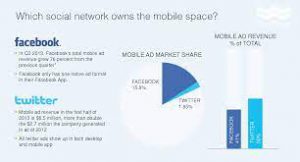

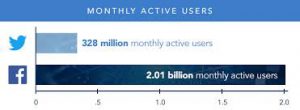
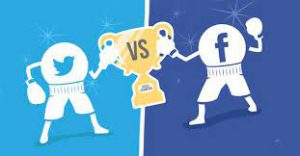
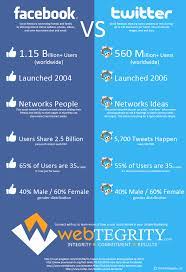
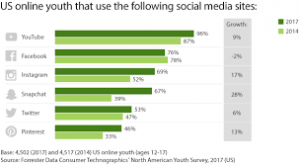
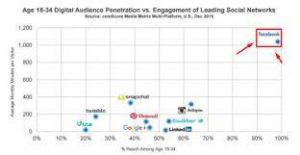
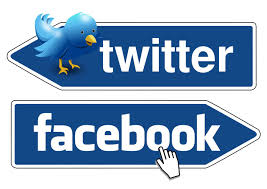

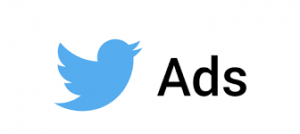
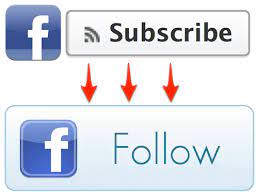
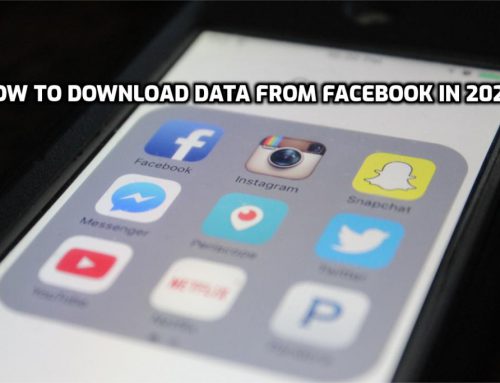

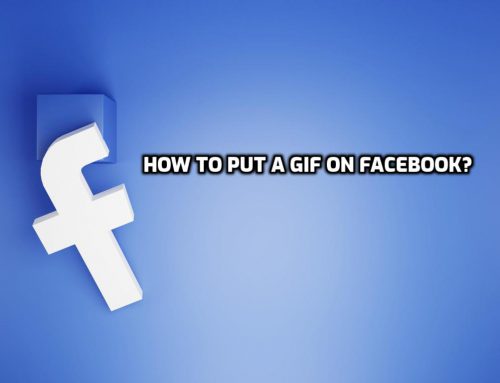
Leave A Comment